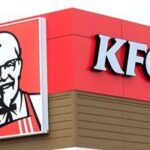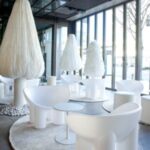NASA, the United States government’s space agency, is often the first organization that comes to mind when people talk about space. NASA’s predecessor, NACA, was dedicated to aeronautical research and contributed to the development of various aircraft technologies. Since its inception, multiple studies on space and the aviation industry have been conducted here. Here are the ten products created using technologies developed by NASA.
Smoke Detector

Smoke detectors identify heat, smoke, and flames at the onset of a fire, enabling early response through alarms. The technology was developed by NASA to protect astronauts from fire or toxic gases in space, designed to alert them to such situations in advance. Now, smoke detectors perform their roles in various places, such as homes and restaurants.
Prosthesis

Prostheses are artificial limbs made to compensate for those lost. Although using a prosthesis can strain the leg, it frees up the hands compared to using a wheelchair or crutches. The development of prostheses also traces back to NASA, with robotic prostheses designed to account for the potential difficulty of movement in zero gravity during astronauts’ space missions.
Water Purifier Filter

While many buy bottled water, others use water purifiers. To enable astronauts living in space to drink clean and safe water, NASA developed a technology to purify water using charcoal and negative ions. This not only allows the consumption of clean water but also handles bacteria in the water.
Memory Foam

Memory foam pillows and mattresses deform to fit the body, allowing comfortable postures. Once the physical force applied to the memory foam is removed, it returns to its original shape. Memory foam is an invention developed by NASA in the 1960s to ensure that seats absorb impact when astronauts land on Earth.
Ear Thermometer

Ear thermometers have become prevalent in our lives ever since the COVID-19 pandemic. Thermometers are devices that measure body temperature and, in the past, were placed under the armpits to measure heat. Ear thermometers have been used recently as they are more accurate and quick to measure. This product uses infrared technology, invented by NASA, to measure the temperature of stars in space was utilized.
Shoe Insoles

Shoe insoles enhance comfort by reducing the impact when stepping on the ground. Without insoles in shoes, feet can easily become fatigued, resulting in injuries due to a lack of stability. NASA was the first to conceive the idea of shoe insoles. In the 1950s, NASA developed shoe insoles using springs to ventilate and cushion spacesuits, which were later integrated into space boots.
Scratch-Resistant Glass

Many of you are probably reading this article on a smartphone. The glass on smartphone screens is equipped with technology to prevent scratches. This technology, developed by NASA, is used not only on smartphone screens but also on glasses, sunglasses, and various other products. Scratch-resistant glass technology, made to prevent damage from dust or stone fragments flying in space, was further applied to astronaut helmets.
Electric Drill

An electric drill is powered by electricity that drills holes in a desired location. Although it is now common in our daily lives, NASA invented the electric drill. A drill that could be used freely without a cord was needed to collect planetary samples of hard surfaces in space, so NASA developed an electric drill powered by a battery.
Concentrated Baby Food

Baby food is what infants eat as they transition into consuming solid meals. Among various baby food options, concentrated baby food products made with a jam-like consistency owe a significant part to technology created by NASA. NASA experimented with food resources that could be eaten in space for a long time, leading to technologies utilized to develop concentrated baby food sold on the market.
Clear Orthodontic Aligners

While wire-shaped orthodontic products to correct teeth are still popular, clear protective film-like orthodontic aligners are widely used worldwide in dentistry. These clear orthodontic aligners use a transparent ceramic called TPA (Translucent Polycrystalline Alumina) developed by NASA researchers to protect infrared antenna tracking missiles.















Most Commented